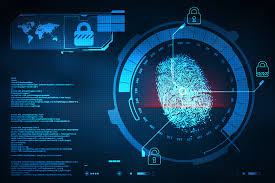“Connecting Threat Intelligence to Business Goals”
Cyber Threat Intelligence (CTI) is the structured discipline of gathering, analyzing, and applying threat-related information to reduce risk and enhance cybersecurity decision-making. In today’s threat landscape, aligning CTI with business objectives is not just beneficial—it is essential. This is particularly critical when organizations evolve from reactive tactics like dark web monitoring to a proactive, intelligence-driven CTI strategy. Such a transition demands a value-oriented, structured approach.
Role of Dark Web Monitoring in CTI
Dark Web Monitoring involves the continuous observation of hidden or anonymous segments of the internet—such as darknet marketplaces, forums, paste sites, and IRC channels—where malicious actors often operate. These spaces are hubs for trading stolen data, sharing exploits and malware, advertising access to compromised systems, and discussing vulnerabilities in organizations or industries.
Key Contributions of Dark Web Monitoring to CTI
- A Vital Data Source: While not a complete intelligence function on its own, dark web monitoring provides raw, high-value threat data—including stolen credentials, mentions of corporate assets, leaked proprietary documents, and offers to access internal systems. CTI teams can correlate this data with internal logs (e.g., SIEM, EDR) to enrich analysis.
- Credential Exposure Detection: Identifies compromised email-password combinations associated with executives and employees, enabling swift remediation.
- Insider Threat Identification: Flags mentions of internal tools, confidential login portals, and proprietary information, often indicative of insider activity or breaches.
- Fraud & Brand Protection: Detects malicious domains (typosquatting), counterfeit apps, and phishing kits that mimic the company’s brand.
⚠ Note: Dark Web Monitoring has limited value unless it is contextualized and analyzed to generate actionable intelligence.
Strategic Role of Threat Intelligence in CTI
Threat Intelligence (TI) is the lifeblood of CTI—transforming raw data into actionable insights. It provides contextual information about adversaries, their tools, tactics, motivations, and infrastructure. Without it, CTI becomes fragmented, reactive, and speculative.
Strategic Functions of Threat Intelligence
- Framework Alignment: TI leverages models like MITRE ATT&CK to classify adversary behavior and maps findings to frameworks such as NIST CSF or IEC 62443 for operational integration.
- Feed Optimization: Merges open-source, commercial, industry-specific, and dark web sources—prioritizing quality over quantity to avoid alert fatigue.
- Automation & Integration: Integrates intelligence into platforms like SIEM, SOAR, and TIPs, and employs threat scoring models to prioritize incidents.
- Threat Detection & Prevention: Supports IOC-based detection (e.g., malicious IPs, hashes) and behavior-based analysis using adversary tactics and techniques.
- Incident Response Acceleration: Enhances response workflows by providing attribution, threat motivations, and likely attacker next steps.
- Proactive Threat Hunting: Fuels hypothesis-driven searches based on TTPs detailed in threat reports, surfacing hidden threats before they manifest.
- Risk-Based Prioritization: Connects technical threats to business impact—guiding decisions like patch prioritization, supplier audits, and security investments.
- Executive Decision Support: Informs leadership on risks associated with market entry, regulatory compliance (e.g., GDPR, HIPAA), and M&A cybersecurity due diligence.
Tools Supporting Modern CTI
Dark Web Monitoring Solutions
- DarkOwl Vision – Monitors forums, marketplaces, and IRC channels for leaked brand- or employee-related data.
- KELA – Delivers contextual intelligence on cybercriminal activity by sector or geography.
- Flashpoint – Enriches dark web findings with threat actor attribution and geopolitical context.
- IntSights (Rapid7) – Converts raw breach data into business-relevant alerts.
- Recorded Future (Dark Web Module) – Connects actor discussions to potential operational or strategic threats.
Threat Intelligence Platforms (TIPs)
- ThreatConnect – Links intelligence to business risk for prioritization.
- Anomali ThreatStream – Aggregates multiple TI feeds and automates responses through SIEM/SOAR integration.
- MISP (Open Source) – Facilitates collaborative sharing of IOCs and adversary TTPs across trusted networks.
- EclecticIQ – Fuses cyber, fraud, and geopolitical intelligence for holistic threat assessment.
Conclusion
The cyber threat landscape is in constant flux, growing in both volume and sophistication. As threats evolve, so must our defenses. Shifting from reactive monitoring to a proactive, intelligence-driven cybersecurity strategy is no longer optional—it’s imperative. Organizations that align CTI with business objectives are better positioned to mitigate risk, protect assets, and maintain resilience in the face of dynamic cyber adversaries.








